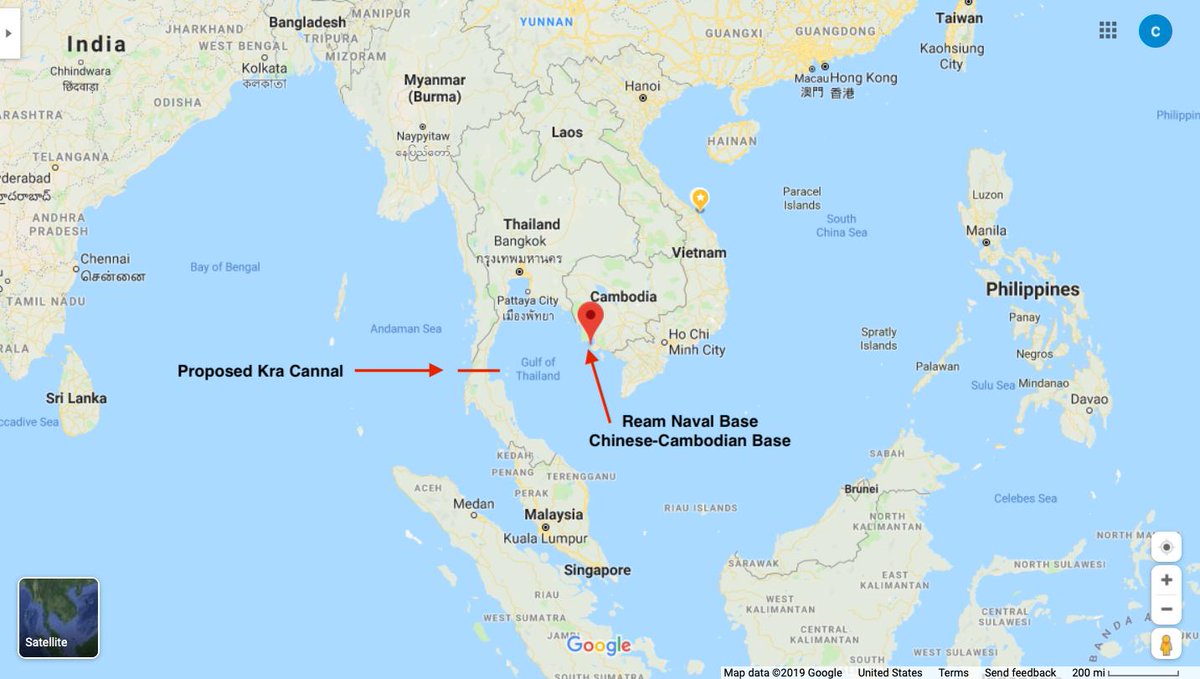

The city lies at the confluence of the Mekong River, the Bassac River, and the channel flowing from the Tonle Sap Lake. Phnom Penh, the capital of Cambodia since the mid-15th century and the country’s largest city, has a population estimated at 1 million. The eastern provinces support large (although old) rubber plantations. Much of the north and northeast is covered by a thick jungle of vines, bamboo, palm trees, and assorted other ground plants. The mountains have retained more of its forests than the lowlands, with virgin rain forests in the southwest, evergreen and mangrove forests along the coastal strip, and towering broadleaf evergreen forests in the north. The highest elevation, Phnom Aoral (100 km northwest of Phnom Penh) is 1,813 meters. Most of the country lies at an elevation of less than 100 meters above sea level. Cambodia’s significant mountainous areas lie in the southwest (the Cardamom Mountains), the south (the Elephant Mountains), and the north (the Dangrek Mountains). Nearly a decade of extensive logging, both legal and illegal, has greatly diminished the area covered by mature forests. Historically, heavy forests dominated the landscape in areas away from the Lake and rivers. However, only two-thirds of the land cultivated before 1970 is cultivated today, largely as a result of the danger of land mines and a lack of equipment and irrigation. Rice is grown in 90% of the cultivated land. Sprinkled throughout are tall sugar palm trees and occasional wooded areas. The central lowlands are characterized by seemingly endless, flat rice paddies, fields of reeds and tall grass, and fields of cultivated crops such as corn, tobacco, sesame, and tapioca.

As a result of this unique occurrence, the Tonle Sap is one of the richest sources of freshwater fish in the world. The swollen and swift-moving Mekong River causes the flow of water in the channel linking the Tonle Sap Lake with the Mekong to reverse, forcing water to drain back into the Tonle Sap and, over time, causing the Lake to more than double in size. However, during the rainy season when the level of the Mekong rises, an extraordinary phenomenon takes place. During the dry season when the water level of the Mekong is low, water flows southeast out of the Tonle Sap Lake into the Mekong River.

The Tonle Sap Lake, located in western central Cambodia, connects with the Mekong River at Phnom Penh via a 100-kilometer-long natural channel. The rich sediment deposited during the rainy season when the Mekong River swells and floods adds to the fertile growing conditions that exist throughout the Upper Mekong Delta. The Mekong River flows more than 500 kilometers through Cambodia and in some places, it is up to 5 kilometers wide. Cambodia has a short coastline along the Gulf of Thailand where the main port and popular weekend destination, Sihanoukville, is located.Ĭambodia’s topography consists primarily of flat, low-lying plains that are drained by the Tonle Sap (Lake) and the Mekong and Bassac Rivers. It is bordered on the northwest by Thailand, on the north by Laos, and on the east and southeast by Vietnam. The Kingdom of Cambodia covers an area of 181,040 sq. What is the terrain and geography like in Cambodia?


 0 kommentar(er)
0 kommentar(er)
